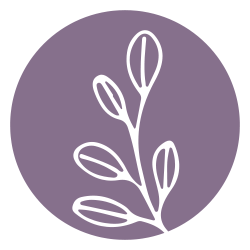Growing Around Grief
By Angie Vanderwees, Registered Psychotherapist
Generally, when we hear the word grief we think of loss, and that is often true. Yet it’s not always loss of a person, it could be loss of an experience, an opportunity, or even an aspect of one’s own identity. So, there can be a lot of ways that discussions of grief and loss may come up in therapy.
“Complicated grief” is a term used to describe more intense and longer-lasting grief, which can occur after deaths that are shocking and/or sudden. When the complicated and devastating stories of loss enter the therapy room, it’s easy as a therapist to feel helpless. As a helper I always wish I could help just wash away the pain that others experience after a loss or devastating life event.
As humans we can’t experience love without loss, and sometimes unfortunate events occur where we might lose the people or animals who are our whole entire world. As described by psychologist Maria Sirois “Our very capacity to love is what leaves us vulnerable and yet it is our greatest strength,” (p. 22).
Sirois also states, in her book A Short Course in Happiness After Loss: And Other Dark Difficult Times, “And everything that you thought to be true is thrown into chaos.” She also describes the early stages of grief like being in a cave without light, reminding others that their goal during this time should merely be to survive. Over time, it’s possible to find that “our pain can be excruciating and there’s a way to live such that life shimmers with meaning and joy” (Sirois, p. 82).
How do we remember and keep living?
In her book Why Has Nobody Told Me This Before? Everyday Tools for Life’s Ups and Downs, Dr. Julie Smith writes, “When remembering someone causes us pain, and engaging in the present without them causes us pain, the two experiences can feel at war with each other…perhaps one of the things that changes over time with grief is the bringing together of these two things. Or the discovery, through trying, of a way the two needs can co-exist. The need to engage in the life and the need to stay connected with the person lost.” (p. 143)
What are ways you can make a deliberate choice each day, to live in ways that honour both the past (remembering your loved one) and the present/future?
Remember that “The wound following a loss is not something to be fixed or healed. We do not want to forget that person, we want to remember them and continue to feel connected to them. So the wound does not diminish or disappear. It remains while we work hard to build a life around it” (Rando, 1993, as cited in Smith, p. 143). This leads into the “Growth Around Grief” concept, which is a helpful way to reframe moving forward in life alongside grief. The image below helps to illustrate this concept.
As noted above, during the early stages of grief, when the body is in shock and one’s stress response is constantly heightened, one’s focus should simply be on basic needs like food and water.
Over time, it gets easier to adapt to and survive in this new world. Here are some simple suggestions for how to “grow around” grief:
Journalling or artwork, which can help to share your story and express difficult emotions
Seeking out new friendships and relationships
Setting small goals to re-engage in once loved activities, such as exercise
Building acceptance for emotional pain when it arises
Looking for life experiences that will build meaning and purpose, while still honouring your loved one, such as travelling someplace new, while carrying a photo or memento in your wallet
Practicing gratitude
Angie Vanderwees
Registered Psychotherapist
References
Sirois, M. (2016). A short course in happiness after loss: (and other dark, difficult times). Green Fire Press.
Smith, J. (2022). Why has nobody told me this before? Everyday tools for life’s ups and downs. HarperOne.
Tonkin, L. (1996). Growing around grief—another way of looking at grief and recovery. Bereavement Care, 15(1), 10-10.


